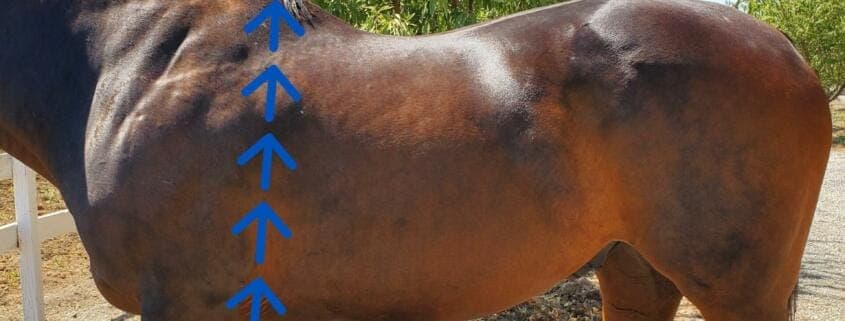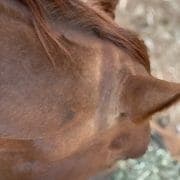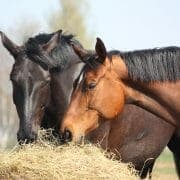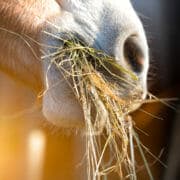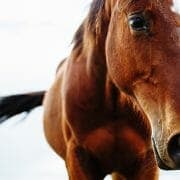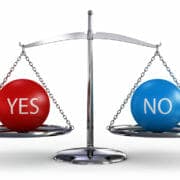How to Calculate Your Horse’s Body Weight
Getting Started
Knowing your horse’s body weight is crucial for proper diet formulation. Access to an actual scale can be tricky, but luckily there are alternative methods to estimate your horse’s body weight.
To measure your horse’s body weight, we recommend using the heart girth measurement (around the horse) plus length, and use these values in the following formula:
Body Weight = (Girth2 x Length) / 11877
Did you know – in FeedXL you can simply enter your measurements and the calculator will do the work for you!
To obtain the girth and length measurements of your horse, you will need a tape measure and possibly an assistant to hold the horse & help holding the tape.
If you don’t have a suitable tape measure that your horse is comfortable with, you can use any type of string (for example baling string) to take the primary measurements and mark the start and end points for example with a knot. Then measure your string for the actual measurement value.
Save your string, it will be easy to use next time as well, and you can quickly see if your horse has had any changes in weight!
Measuring the Heart Girth
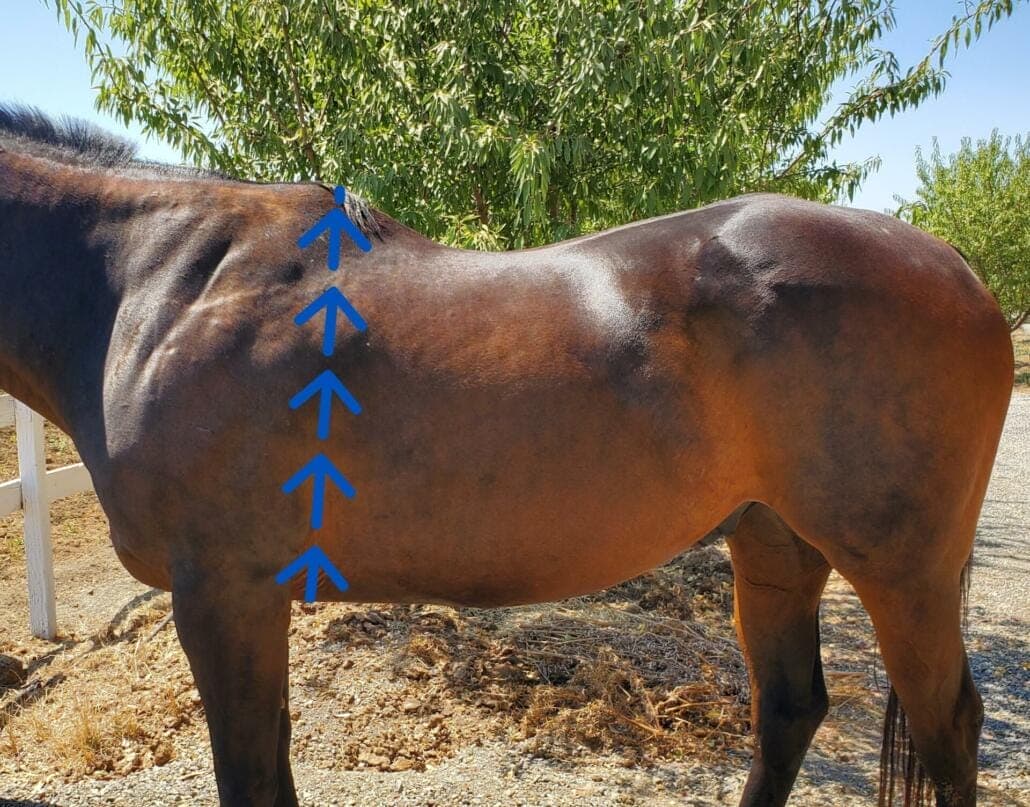
Bring your tape measure over the horse and place it right behind the elbow and approximately an inch / 2.5 cm behind the highest point of the withers. Ideally the measurement is taken during exhalation.
Measuring the Length
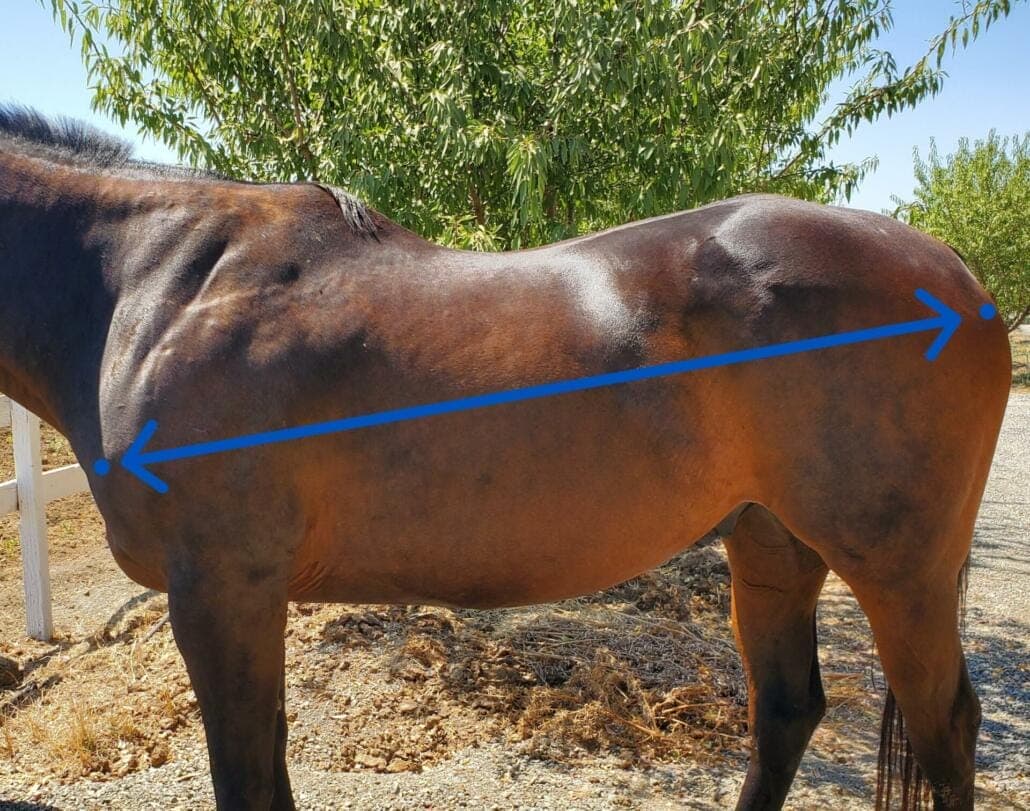
Have your horse stand straight and place the tape measure from the point of the shoulder to the point of the buttocks.
If you run your hand down on the horse’s neck towards the shoulder, you can feel the tip of the humerus bone. This will be your point of shoulder. Also, if you run your hand down from the duck of the tail, towards the buttocks, you will feel the tip of the ischium. This will be the point of the buttocks.
Final Tips
Although using a tape measure to estimate body weight doesn’t beat an actual scale in accuracy, it is important to be consistent with your measurement habits to obtain comparable results. Measuring at the same time of the day (for example first thing in the morning), using the same location, making sure your horse is standing on all fours, is calm and breathing normal will help you obtain trustworthy weight estimates which you can then use when formulating diets.
Interested in learning more about helping your horse achieve an ideal weight? Learn how to score your horse’s body condition here in our blog: Why Body Condition Score? (feedxl.com)
Do you have a question or comment? Do you need help with feeding?
We would love to welcome you to our FeedXL Horse Nutrition Facebook Group. Ask questions and have them answered by qualified equine nutritionists and spend time with like-minded horse owners. It’s free!
Click here to join the FeedXL Horse Nutrition Facebook Group

